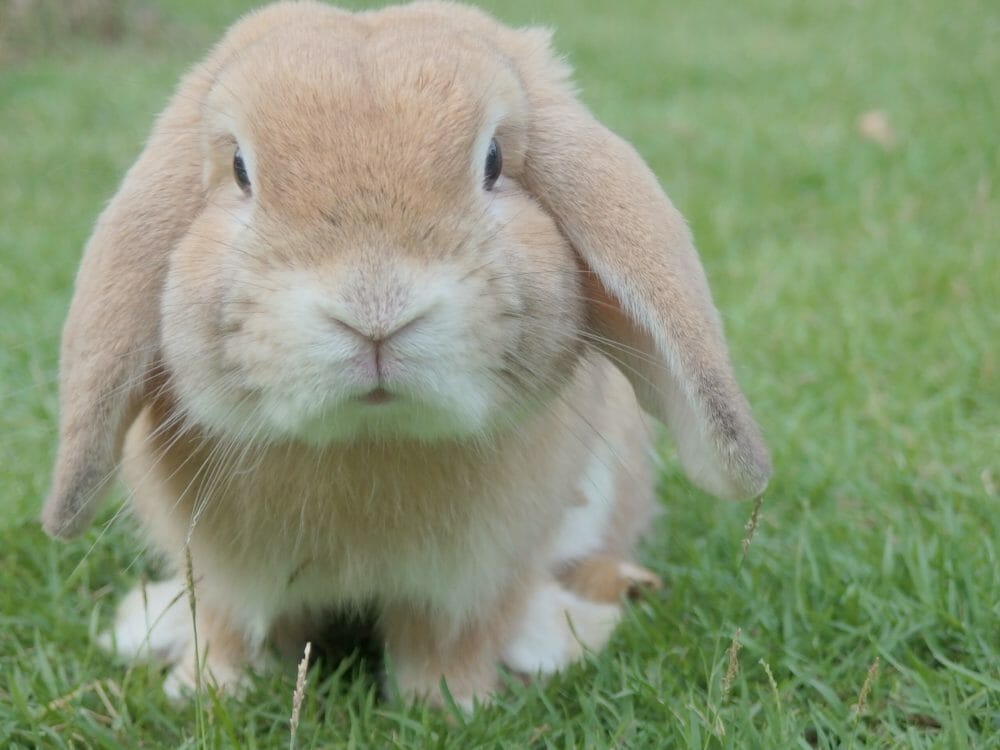How to Take Care of a Bunny

Rabbit Care by Waranya Mooldee
Perhaps you’re interested in getting a pet rabbit, but you’re unsure of how to care for it. Maybe you just brought your new bunny home and realize you don’t know much about having a pet rabbit. Wherever you might be on the journey, it’s important to know some key facts about house bunnies and the best way to care for them. Here are eight things you need to know about rabbit care.
Proofing Your House
Whether your rabbit is allowed to roam free on a regular basis or is in some form of a cage most of the day, it’s important to proof your house for your rabbit’s safety and the care of your home. Here are some steps you can take to make this happen:
- Protect electrical cords with a wrap or tubing.
- Place boards or plastic guards over your baseboards if it’s something the rabbit is interested in.
- Some plants can be toxic so check what plants are in your home and keep them high off the ground.
- Block off areas that you don’t want your rabbit in with baby gates.
Their Food Diet
Your rabbit’s diet should consist of three things: fresh hay, vegetables, and pellets. The primary food to lean on is fresh hay as it aids good dental hygiene and fiber for their digestive system. For baby rabbits, you’ll want to use alfalfa and for adults, you can choose from oat hay or timothy.
You can also add vegetables such as celery, carrot tops, basil, parsley, and romaine lettuce to the mix. And finally, fresh pellets can be a great additional meal. Also, don’t forget to provide your pet rabbit with plenty of water! If you’d like more information and a detailed list, visit here.
The Ideal Bed
There are two options to consider for your rabbit’s bed and which you choose will determine the best route to take. If you choose to allow your rabbit free reign, you can put out a plush rabbit bed in a safe area. The other option is to set up a cage using a dog kennel or rabbit house. You’ll want to make sure whatever you use is sufficiently large for your rabbit to move around; it should be able to stand up on its hind legs.
Potty Training 101
You can potty train a rabbit, but you must do it early on, once they’ve been spayed or neutered. Start with a small area and set up a large litter box; rabbits like to stretch. You can use a cat litter box or storage bin with low sides. Also, fill it with newspaper on the bottom and then add a layer of hay. Rabbits like to eat hay while pooping so it works out!
Once your rabbit has mastered the small area, you can start enlarging the area until you reach the desired parameter.
Providing Entertainment
Pet rabbits must be stimulated because if they get bored, they’ll likely turn to chew on your furniture or other items around the house. One thing you can do that is really easy is set out a cardboard box. Rabbits will spend hours gnawing on a box and it’s an easy activity to provide. You can also supply toys purchased at your local pet store for stimulus.
Connecting with Your Rabbit
Rabbits have personalities and each can be different, so it’s important to pay attention to how yours acts. Most rabbits don’t always enjoy being held and rather like the floor. Also, be careful not to discipline the rabbit using fear or punish them because this can create a disconnect and even lead to biting.
Grooming & Care
Like cats, rabbits will clean themselves so you don’t have to worry about giving yours a bath. However, there are two things you will want to do on a regular basis to help with your rabbit care and grooming. One, brushing your rabbit’s fur often will help keep your pet from digesting extra, which can be harmful to their system. Two, when their nails get long, clip them. Doing both will help keep your rabbit groomed.
Visiting the Vet
Unlike a cat or dog, you won’t be able to take your rabbit to any vet. You’ll want to call local vets and identify one that has the training and experience to care for rabbits. A few common reasons why you’ll want to visit the vet with your rabbit: spaying and neutering, fleas, GI Stasis, and heat stroke. Keep an eye on your rabbit for health concerns and if something seems off, make a visit to your specialized vet.
Once you get into a routine and groove, rabbit care can be quite easy, which gives you lots of time to love on your bunny.
Wondering how long your bunny is expected to live? Find out here!
I have always loved rabbits. A rabbit was my very first pet. Since owning my first rabbit I have gone on to own many more. I look forward to being able to get my kids their very own pet rabbits.


Hello. First of all, thank you for providing information and pictures of rabbits. They are really cute. Now I have a question about an albino rabbit that has been hanging around our yard since summer. Okay, there is a couple of black rabbits who look domesticated that eat dandelion leaves in our yard. They started visiting last winter and I still see them once in a while. Last August one of the black rabbits was chasing an albino rabbit around our yard and I thought they must be playing. I was happy knowing I have a chance to see the rabbits every now and then but to my surprise the albino rabbit stayed in our yard. It is either under the car or under the boat (favorite spot) and once I saw it tucked under the barn. I don’t feed it regularly because we have an area where we allow the growth of dandelions (the rabbits like the leaves) and sometimes I see it feeding at the bird feeding area, I gave it some slices of apple once (fed from my hand!) and carrot leaves this morning. I am not worried about the food but I am concerned about the coming winter, will it survive in the cold? We do not have pets indoors but provide food (bird seeds & suet) and shelter (brush pile) to wild animals (birds, squirrels, porcupine, spruce hens). Wild animals have their coping methods for the winter but I don’t know anything about albino rabbits. I hope you can give me some information as I would really like to see our snow white friend running around our yard in the spring. Thanks again.